Grammy-winning director Charles “Calmatic” Kidd II didn’t set out to become a filmmaker. Nor did the South L.A. native imagine that he’d make his Hollywood debut with two movies in the same year.
But when producers and film executives were searching for a director to reimagine two beloved L.A. films — Reginald Hudlin’s “House Party” and Ron Shelton’s “White Men Can’t Jump,” both released in the early 1990s — no one filled the bill quite like Calmatic.
Calmatic in front of the Watts Towers.
(Dania Maxwell / Los Angeles Times)
“That’s kind of why I did it, because I just feel like my attention to detail from sports, L.A. sports specifically, and the way the culture moves and breathes and what it looks like, I’m just a student of that,” says Calmatic, who got his start in the entertainment industry in 2010 and directed music videos and documentaries for artists like Kendrick Lamar, Anderson .Paak and the late Nipsey Hussle before they were household names. He’s since directed a Super Bowl ad featuring Lakers star LeBron James and won a Grammy for Lil Nas X’s “Old Town Road” music video.
“It’s one thing as a creator to understand the culture and be a student of it, but it’s another thing to reproduce it and make it feel real,” he adds. “That’s kind of my secret weapon.”
Calmatic’s adoration for L.A., specifically Black L.A., is apparent in all of his work, and his approach to directing both “House Party,” released in theaters in January and now streaming on HBO Max, and “White Men Can’t Jump,” premiering Friday on Hulu, was no different. “I wanted to make sure that this was a love letter to LA.,” he says.
It’s no easy feat to remake a film, especially one like “White Men Can’t Jump,” which has been acclaimed as one of the greatest sports movies of all time. To do so, Calmatic delved deeper into the back stories of the lead characters, played in the original by Wesley Snipes and Woody Harrelson, and added a modern perspective on topics like mental health.
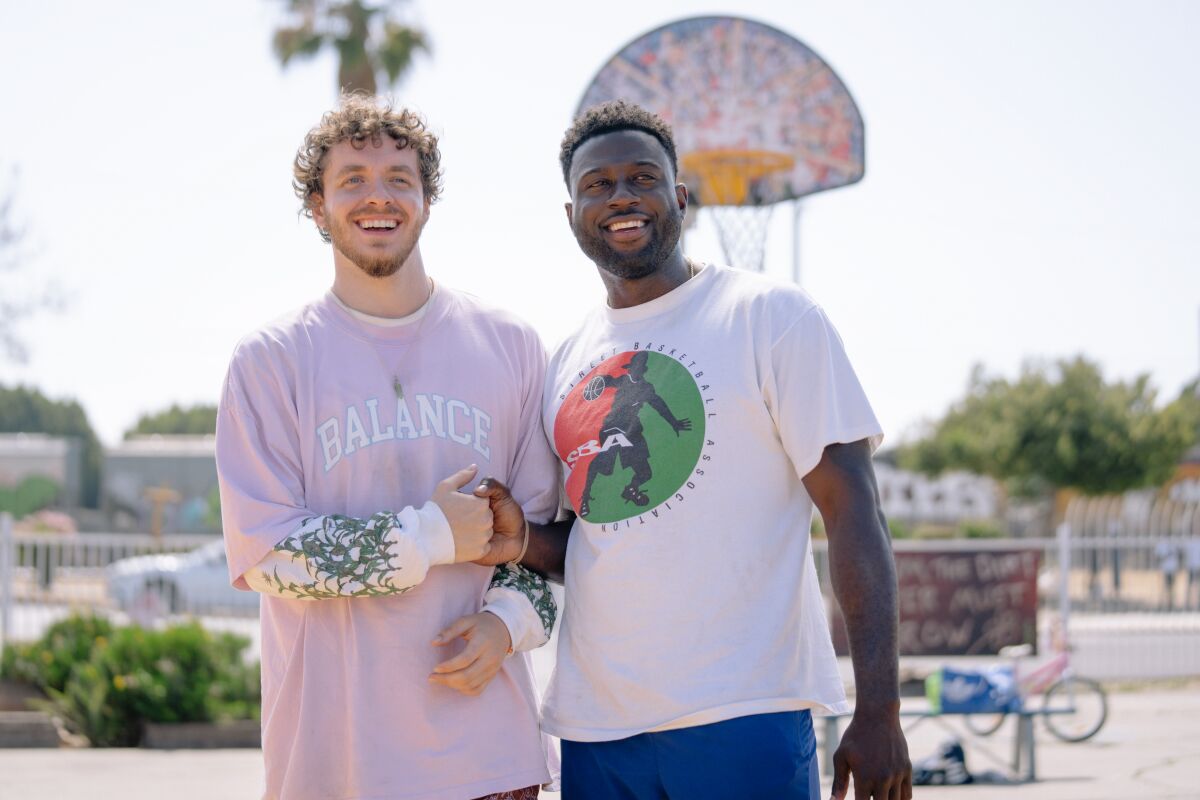
Multi-platinum rap star Jack Harlow, left, and actor Sinqua Walls in the remake of “White Men Can’t Jump.”
(Parrish Lewis / 20th Century Studios)
The updated “White Men Can’t Jump” stars Grammy-nominated rapper Jack Harlow in his debut role alongside actor Sinqua Walls, who’s set to star in Tim Story’s “The Blackening” next month. Co-written by Doug Hall and “black-ish” creator Kenya Barris, who also produced, the story follows Jeremy (Harlow), a talented basketball player whose injuries stalled his NBA dreams, and Kamal Allen (Walls), a once-promising baller who now works as a mail carrier in his hometown. As the unlikely pair team up to hustle money in pickup games so they can pay to enter a basketball tournament with a $25,000 prize, they end up helping each other with more than just their finances.
After spending the last three years working on “White Men Can’t Jump” and “House Party” — both delayed by the COVID-19 pandemic and filmed just months apart — Calmatic says he’s finished with remakes and looking forward to telling original stories.
“White Men Can’t Jump” felt like college and “now I’m going into the real world,” he says. “And to me, my real world is more personal, it’s more selfish and it’s more expressive. I can’t wait to embark on that journey and create from a place that doesn’t have reference points.”
Calmatic recently sat down with The Times to discuss the unique challenges of directing a reboot, how he modernized “White Men Can’t Jump” and why the film is a love letter to his hometown. This conversation has been lightly edited for length and clarity.
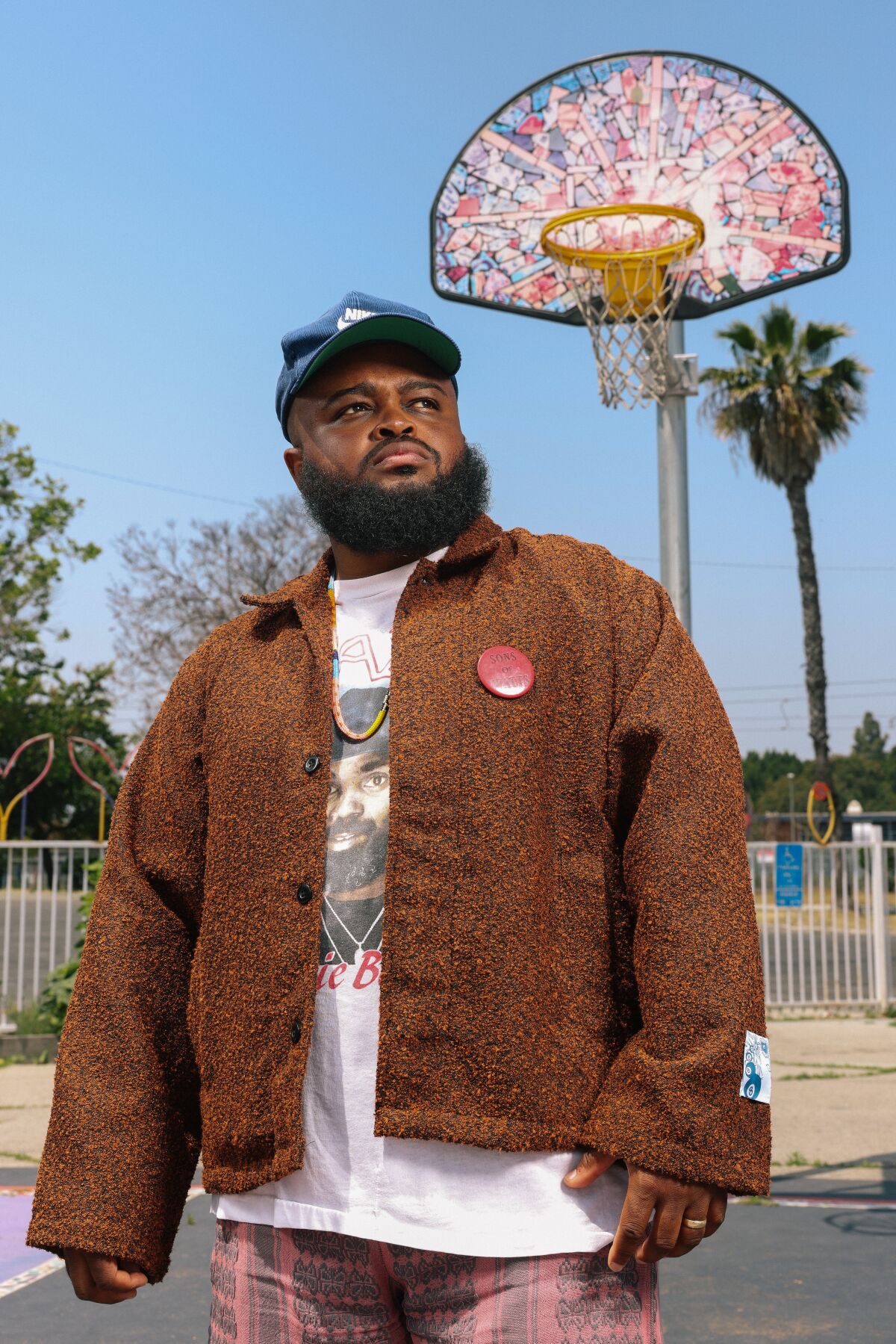
(Dania Maxwell / Los Angeles Times)
You made your debut this year with two films released almost back-to-back. What was that experience like?
On the first film, I felt like I went through it all. Like I went through war. I tell people I feel like I was on an episode of “Scared Straight!” Hollywood edition. [Laughs] It was like everything that could go wrong went wrong, but at the same time, it taught me how this film thing actually works. I feel like every day I learned something new that I wished I knew the day before. But at the end of a 45-day shoot for “House Party,” I had 45 days worth of lessons. And so I was able to apply those things right away to “White Men Can’t Jump.” So it just really felt like even though “White Men Can’t Jump” is my second movie, it almost feels like 1.5.
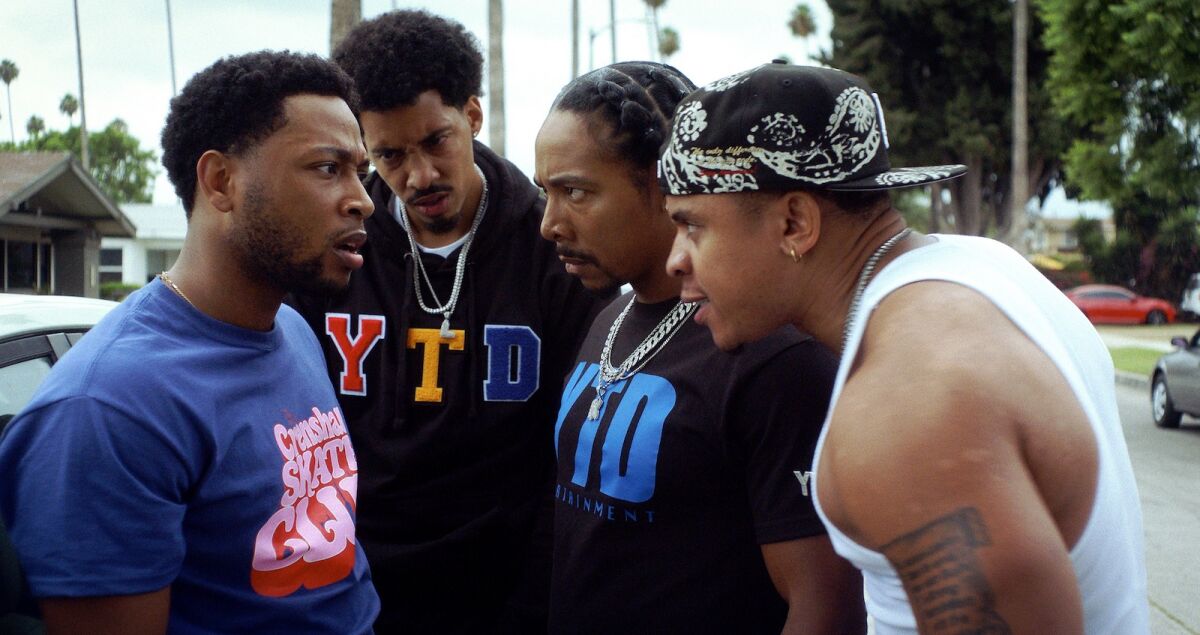
Jacob Latimore, Melvin Gregg, Allen Maldonado and Rotimi in the “House Party” reboot, directed by Calmatic.
( Warner Bros. Pictures / TNS)
Reboots often receive pushback because of the sentimental value that movie lovers hold to them. Did you feel any pressure working on “House Party” or “White Men Can’t Jump?” If so, how did you overcome that?
I think the biggest challenge is that there is a reference point for the material that everyone knows. When I do music videos, like when I did some stuff with Kendrick [Lamar], there’s a bunch of references in there that people have no clue even exist. But for this film, everyone kind of knows that formula and so it’s kind of hard to make it feel new and make it feel fresh. I think the missing piece or the way that I can get out of that is by making something feel real to me and have a very specific experience that only I, quote-unquote, know about, that I can tell that story accurately. So even in the original “White Men Can’t Jump,” it just kind of started off in Venice Beach. We didn’t really know Wesley Snipes’ character’s back story. But in this film, we created a back story for the main character. He went to [Susan Miller] Dorsey [Senior] High School. What does that mean to live in the Jungle and go to Dorsey High School when you were supposed to go to the NBA but you didn’t make it, and now you’re working for, like, an Amazon-type company, delivering boxes to people who live in Ladera Heights and they remember you when you were the top player in the nation? That’s a very unique experience that I’ve witnessed myself. So I feel like that’s what kind of separates this from the other movie. We dove into some of those back stories and we really created these characters and gave them some life that otherwise would have been skipped over.
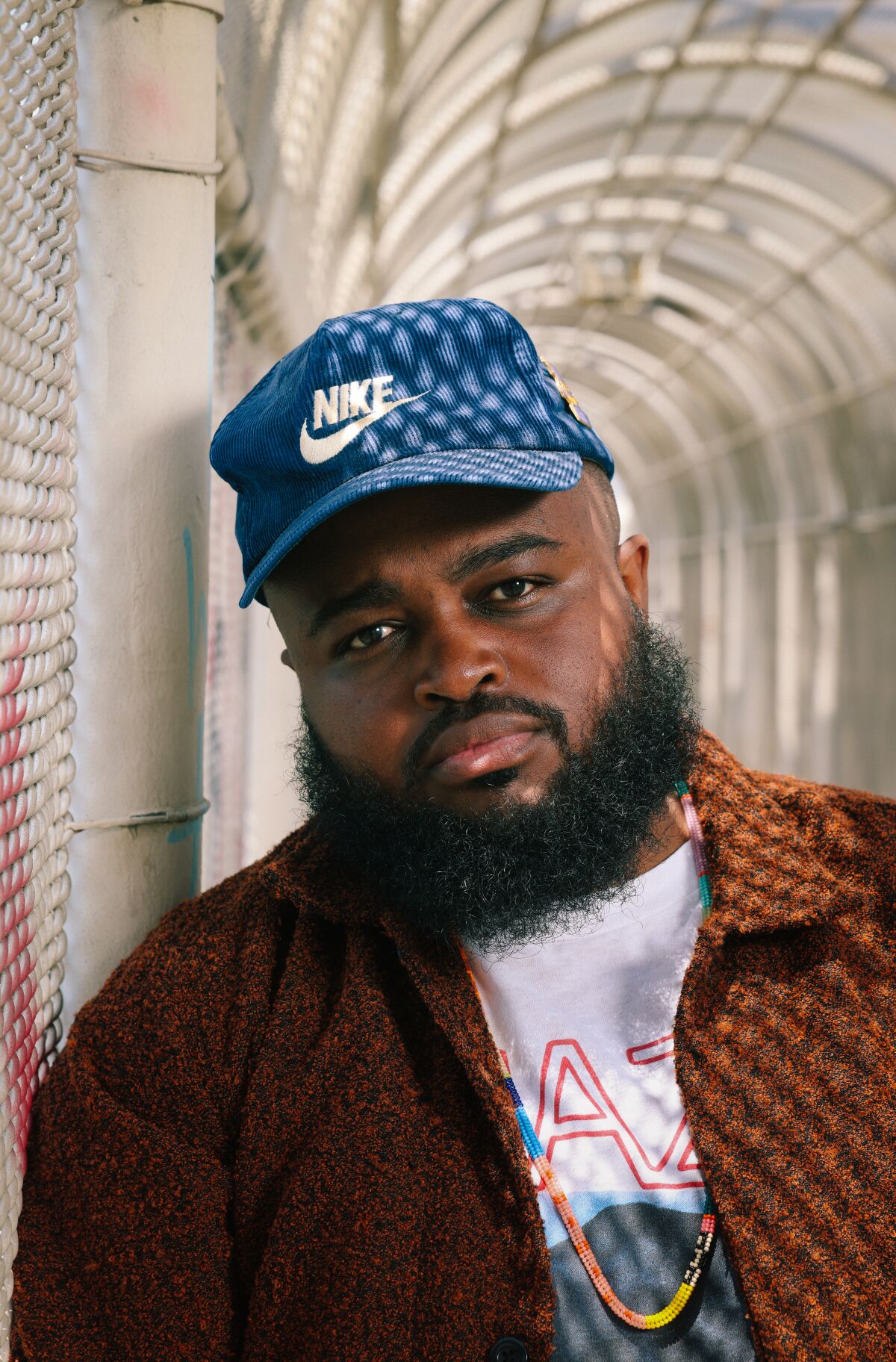
Before making feature films, Calmatic was known for directing music videos for Kendrick Lamar, Anderson .Paak and Lil Nas X.
(Dania Maxwell / Los Angeles Times)
In the original “White Men Can’t Jump,” Harrelson’s character Billy is more of a hothead than Jack Harlow’s character Jeremy, who does meditation, makes homemade pressed juice and talks about therapy often. Why was it important for you to highlight mental health in this film?
Being a Black person looking at white people, I always say I assume that every white person just has their s— together. [Laughs] No matter what they look like. Like, you see them at Whole Foods or Erewhon, but you don’t really know what they’re going through when they go home. You don’t know what challenges they face when the money and the privilege runs out. I wanted to tell that side of it, and not just make it a movie about a guy who owes somebody money and needs to run away. Let’s dig into how they even got into that situation in the first place.
“White Men Can’t Jump” was released in 1992 and set in L.A. What was your approach to showing how the city has evolved in the last 30 years?
I wanted to make sure that this was a love letter to L.A. I almost feel like I can’t make a movie if I don’t find a way to make it about L.A. In the first film, they shot in Watts. They shot in Venice Beach. … They just shot kind of all over L.A., and I wanted to pay homage to that, but also introduce some other places that we haven’t seen on film as much. In paying homage, we filmed at some of the locations from the original film, which was this basketball court near the Watts Towers, but we kind of did our version of it. We spruced it up and made the court look a little cooler and more colorful and made that scene a little bit bigger. We also shot at the court where they had the famous scene where the guy said, “I’m gonna go and get my gun.” That was in South L.A., off of, like, 22nd and Trinity [Street]. We also wanted to introduce the world to Leimert Park, and obviously a few movies or a few shows have featured Leimert Park. But we wanted to show the community aspect of it and see it on a big scale where people are gathering and everything is kind of going well. But I don’t know, it’s just something about L.A. I think filming in the Jungle, filming them driving down Crenshaw [Boulevard] … I feel like I had to kind of make my dreams come true by showing the world what those places look like through my lens.
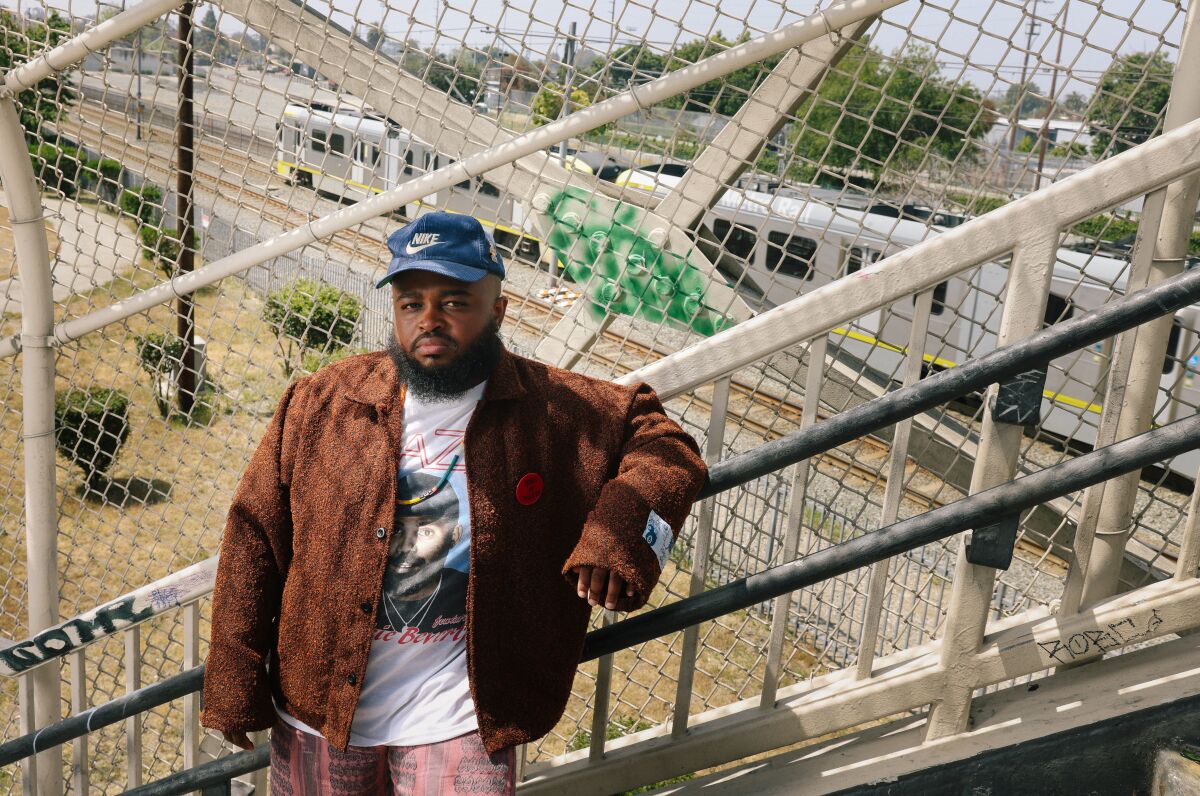
(Dania Maxwell / Los Angeles Times)
Speaking of the film being a love letter to L.A., you featured several local fashion brands (Supervsn and Bricks & Wood), businesses (Harun Coffee and Neighbors Skate Shop) and creatives (rapper Vince Staples, DJ Battlecat and DJ Hed) in the film. Can you talk about why this is so important to you?
I think it’s the same thing that occurred when I did the music video for Pharrell and Jay-Z, “Entrepreneur,” where we set out to find some of the coolest businesses in the world, and it just so happens that, like, four or five of them are in Leimert Park. It’s not that these people are my friends and I just want to put them in the movie. It’s like, no, these are the people that run L.A., and L.A. is like one of the most popular places in the world. So if we’re going to do L.A., let’s do the real L.A. DJ Battlecat and DJ Qwesscoast DJ’d my wedding, but that’s because they’re the best DJs and I wanted the best DJs at my wedding. And if we’re going to put a DJ on a big stage in Leimert Park, who else would it be? It’s almost disrespectful to have anyone else. Same thing with the brands. We could have gone with the big names like Nike and Adidas, but it’s like no. We have brands that represent our community and are tied in to people who grew up here and come from the same soil like Bricks and Wood and Supervsn. It’s only right to have them involved.
You worked with the legendary Lance Reddick, who passed away in March, on this film. What was that experience like and did you learn anything from him?
Man, it’s crazy because when they brought up his name, I was like, “He’s not about to be in this movie. He’s Lance Reddick.” Then I got a call and he was like, “Hey man. I love the script. I want to be a part of this film.” And I was like, “Oh s—, like hell yeah. Let’s do it!” … He did so much research. We had constant conversations about what someone with the disease [multiple sclerosis] that his character has, like, how they behave, how they talk and how it affects the body. He even met with a few doctors and a few people who had experienced that, and so when it came to being on set, he was just on point.
As director, it was weird because I’m so used to giving actors notes. But for him, I was like, “Man, I don’t have any notes. That was damn near perfect.” So I think what I learned from him was the importance of prep. I feel like when he came onto the set, he was just so prepared and knew exactly what to do and knew all the nuances of his character that he just knocked [it] out the park the first time. I don’t think we realize how good we had it for him to be a part of this film.
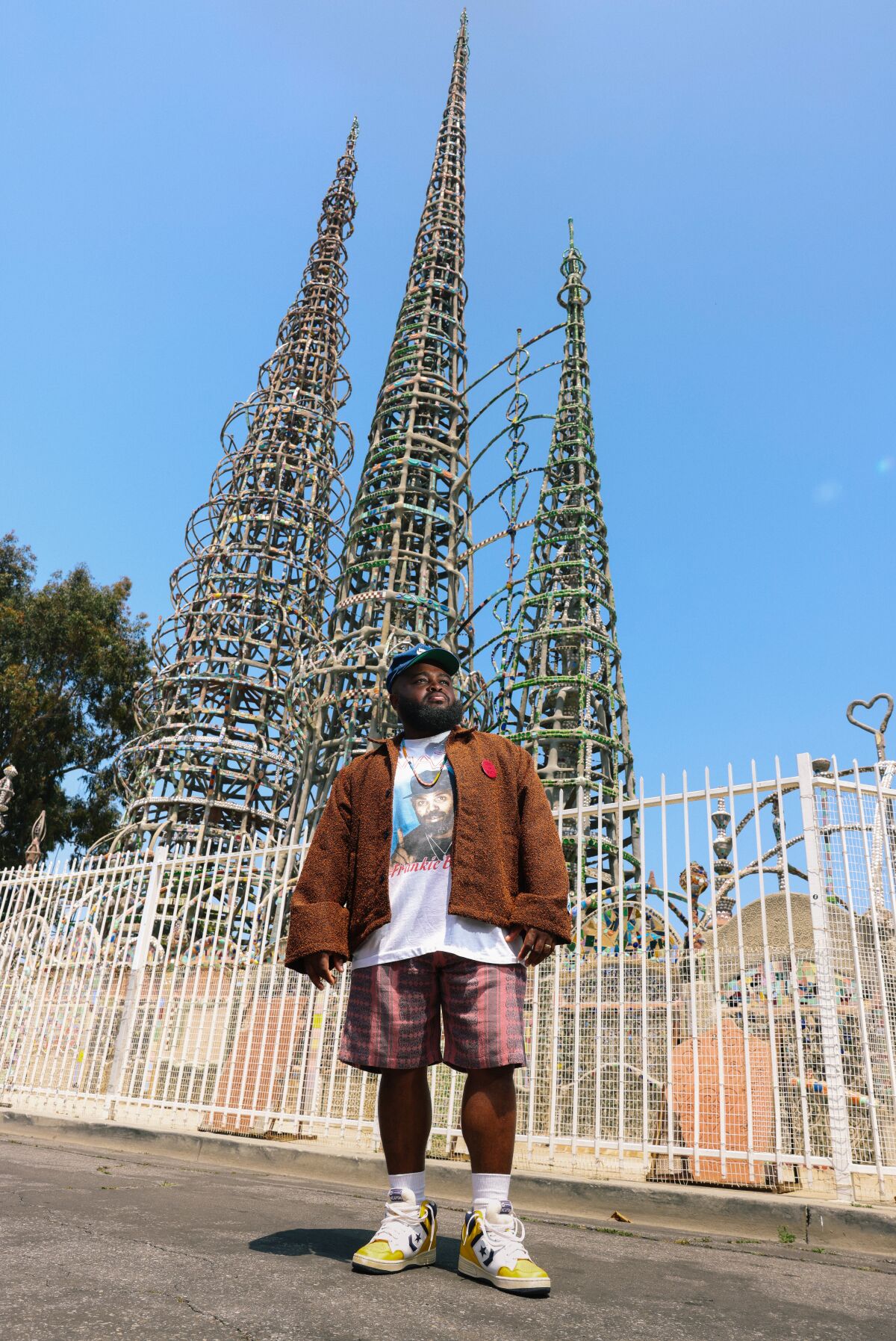
(Dania Maxwell/Los Angeles Times)
This story originally appeared on LA Times

